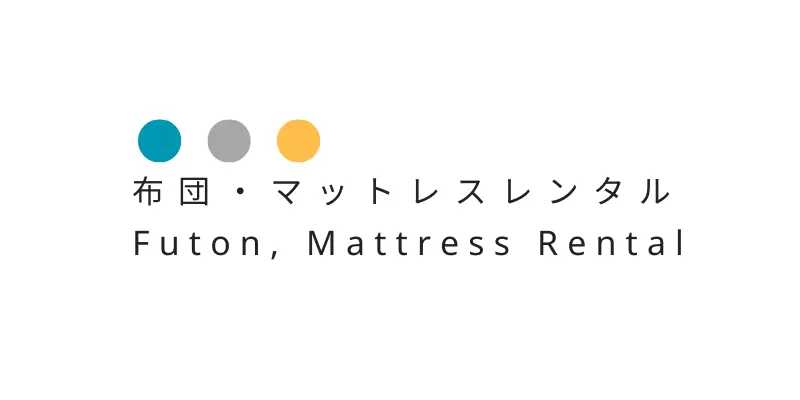The number of residents living together varies greatly depending on the property.
In this article, we will introduce the average number of people living in a share house, as well as the advantages and disadvantages of each size.
If you want to get a concrete idea of what life in a share house is like, please read until the end.
What is the typical number of people in a share house?
There are various types of share houses, from small properties with about 3 residents to properties where as many as 100 people live together.
Share house size and number of people
- Small share house: 3 to 10 people
- Large-scale share house: 11-99 people
- Super large share house: 100 people or more
There are only a few very large-scale share houses that accommodate more than 100 people, and the typical number of residents is 5 to 7 people.
Difference in number of people compared to room sharing
"Room sharing" is a living arrangement similar to a shared house.
In a shared house, you live together with a tenant you meet for the first time, whereas in a room share, you live in the same property with friends and acquaintances.
In the case of room sharing, the number of people living in the room is usually around 5 people, which is not a very large number of people, as you usually sign a rental contract and live in the room individually.
On the other hand, in a shared house, you move into a property that has been recruiting tenants from the beginning, so depending on the size of the property, dozens of people can live together.
If you want to live in a spacious property that can accommodate 5 or more people, or if you want to live together with someone, a shared house is more suitable for you.
Interesting gender ratio
In addition to the number of residents in a share house, many people are also concerned about the gender ratio.
According to a survey conducted by the Ministry of Land, Infrastructure, Transport and Tourism in 2017, approximately 70% of share houses seem to have more female residents than male residents.
Approximately 50% of properties answered that ``female tenants are overwhelmingly'' the most, followed by ``almost equally'' at about 20%.
If you have a clear desire such as ``I would like a good balance between men and women'' or ``I would like to avoid living with someone of the opposite sex,'' be sure to check the gender ratio before signing a contract.
Reference source: Survey on the operational status of share house operators (p.17)
https://www.mlit.go.jp/common/001232766.pdf
Four advantages of a small-scale share house
From here, we will introduce four advantages of small-scale share houses with 3 to 10 residents, so please use them as a reference.
Advantage 1: Easy to get used to due to the homely atmosphere
In a shared house, you'll be living with other tenants you've never met, so you might feel nervous before you get used to it.
However, if you live in a shared house with a small number of people, you can get to know each person individually, which has the advantage of making it easier to get close to each other.
Enjoy home-like interactions in a calm atmosphere.
Advantage 2: Less waiting time
In a shared house, you share the bathroom and toilet, so if other residents are using it, you may have to wait.
On the other hand, in the case of a small-scale share house, there is no need to wait for your turn for a long time.
If you can live your life at your own pace, stress will be less likely to accumulate.
Advantage 3: Common spaces are quiet and easy to use
The common spaces such as the living room and dining room in small-scale share houses are quiet and calm because there are not many people.
Therefore, in addition to being able to spend a relaxing time, you are less likely to experience noise problems such as having trouble sleeping due to loud voices in the living room.
Advantage 4: Large number of properties
Compared to large-scale share houses, the appeal of small-scale share houses is that they have a larger number of properties, so you have a wider range of options to choose from.
You can search for properties based on specific criteria such as location, interior design, and share house concept.
Two disadvantages of small-scale share houses
Although this small share house seems comfortable, there are two disadvantages.
Disadvantages ① If you are not compatible with the tenant, you will not feel comfortable.
When you live with a small group of people, you have many opportunities to see each other, so if your personality doesn't match that of the other residents, you may feel very uncomfortable.
This kind of situation can be avoided to some extent by having the opportunity to talk with the tenant during the preview and checking their personality in advance.
Disadvantage ② Few events
When you hear the word share house, some people may think of parties, BBQs, and other events where everyone can get together.
However, there are few opportunities to hold large events in small-scale share houses, so those who are looking forward to events may be disappointed.
Four advantages of large-scale share houses
Next, we will introduce four advantages of large-scale shared houses with 11 to 99 residents.
Advantage 1: You can meet a variety of residents
Large-scale share houses gather residents of diverse ages, occupations, and nationalities, so you can meet new people that you don't have in your daily life.
Since there are a lot of people, there is a high probability that you will find someone you like.
Large-scale share houses are suitable for people who want to expand their network or live with friends who have similar interests.
Advantage 2: There are always people around so you don’t feel lonely.
If there are a large number of residents, there will always be someone in the home.
You can communicate with other residents at any time, so you rarely feel lonely.
Additionally, burglars target homes when people are not home, so this is a good idea in terms of crime prevention.
Advantage 3: Plenty of common space
One of the advantages of large-scale share houses is that the common spaces are spacious.
You can use the spacious living room and dining room, which is not available in single-family properties.
Depending on the property, there are theater rooms, training rooms, etc., so you can enjoy the extraordinary feeling that can only be found in a share house.
Advantage 4: There are many properties where events are popular.
Some large-scale share houses hold regular events such as welcome and farewell parties, cherry blossom viewing, and Christmas parties.
Even though we live together, there are some residents who don't see each other regularly unless their daily rhythms match, so events like this are a great opportunity to get to know each other.
In addition to seasonal events, there are also cases where residents hold unique events such as dance lesson workshops.
For those who like lively places or those who want to enjoy their hobbies, a large-scale share house with lots of events is the perfect place.
Two disadvantages of large-scale share houses
Although large-scale share houses have multiple advantages, there are also two disadvantages.
Disadvantages: Noise may be a concern for some people
Because each resident has a different lifestyle rhythm, there is a possibility that you may have trouble sleeping because you hear other residents talking in the common space at night.
People who are sensitive to people's presence and noises may feel stressed if their living rhythms are not compatible with the residents.
Disadvantage ② There are few places where you can be alone.
Having someone at home all the time is an advantage, but it can also be a disadvantage.
For example, in a large shared house, you don't have much space to be alone even when you're tired or depressed.
However, if you are in a type of property where each person is assigned a private room, you can have a private space even though it is a shared house.
Learn about the characteristics of each share house size and choose the property that suits your lifestyle.
What did you think?
The number of people living together in a shared house varies depending on the size of the property.
Small-scale share houses with 3 to 10 residents are attractive because they offer a homely atmosphere and are quiet and calm, as they allow for deep interaction with a small number of people.
On the other hand, large-scale share houses where 11 to 99 people live together are superior in that you can spend a lively time with a variety of tenants, and you can use the extraordinary facilities that only a share house can provide.
XROSS HOUSE provides information on a variety of share houses, from small to large.
We offer shared houses that are not only large in size, but also in location and interior decoration, so if you are considering moving in, please feel free to contact us.






